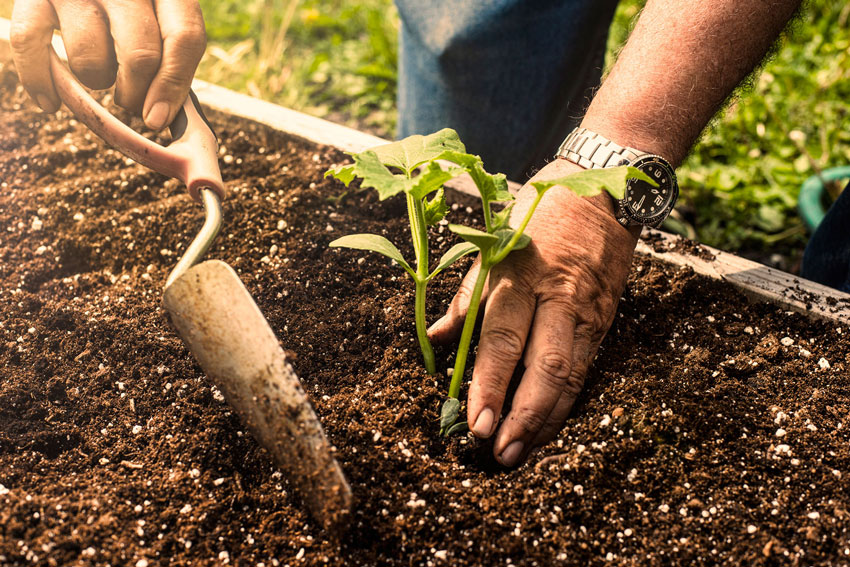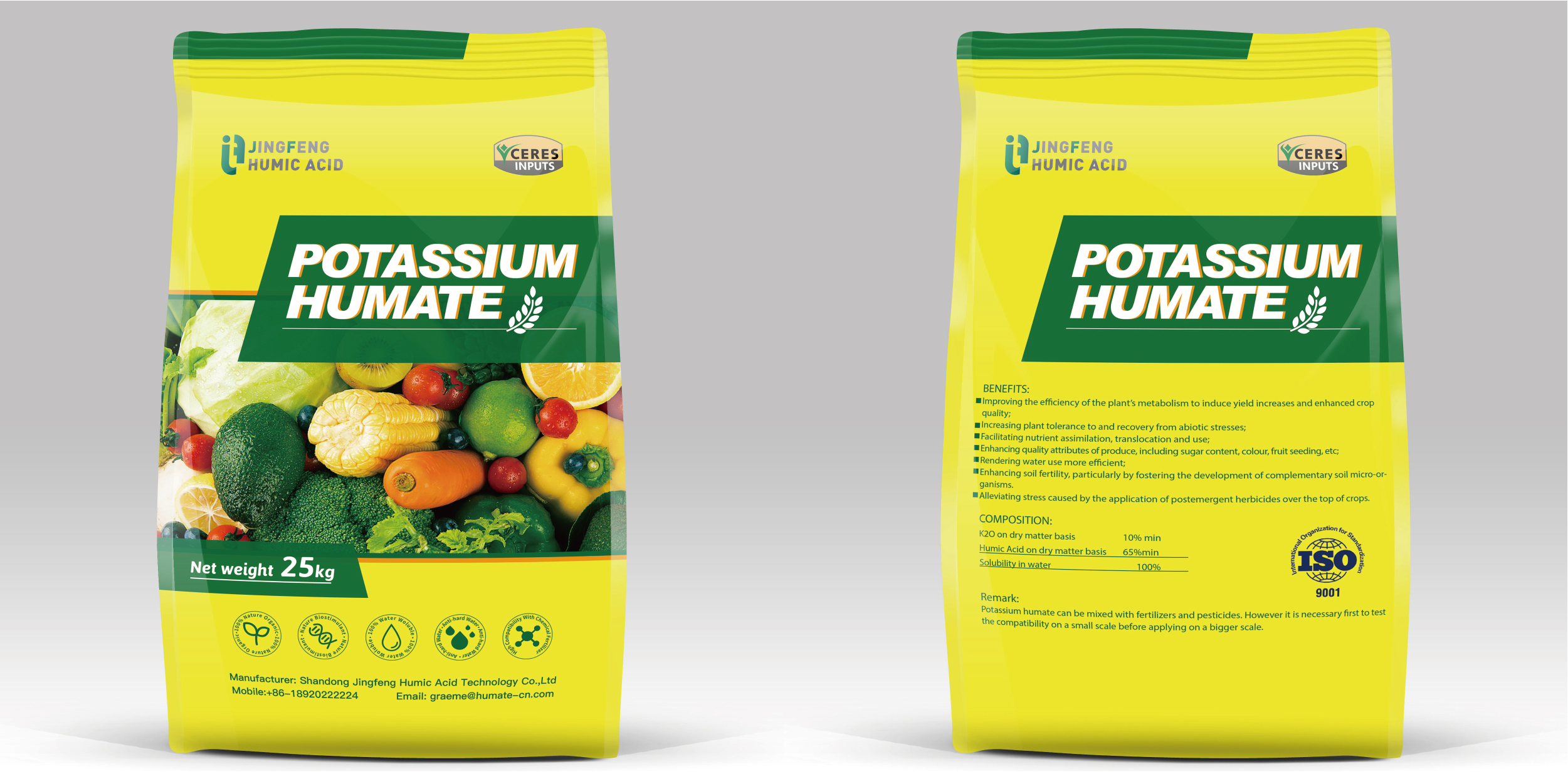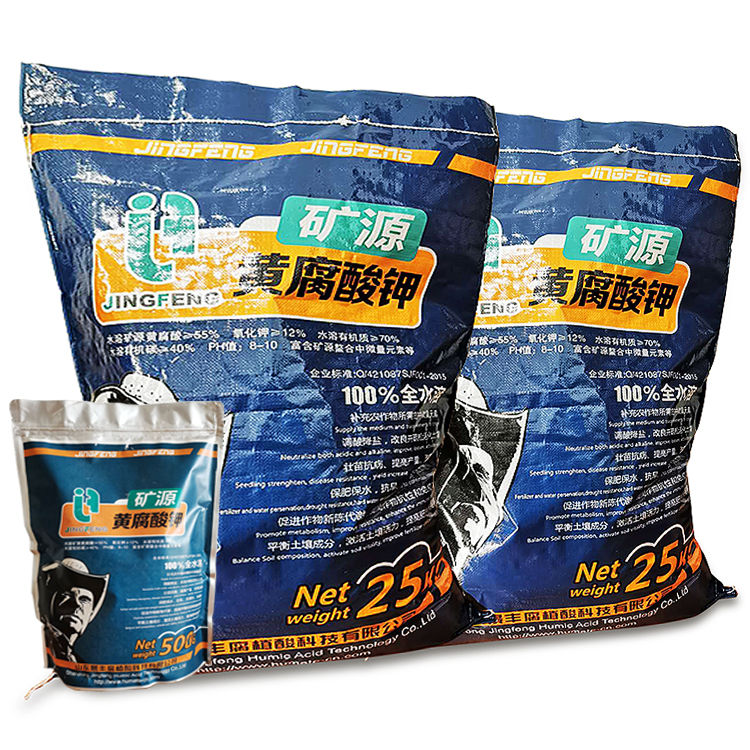Most customers have asked me how to use organic humic acid(We can just call it humic acid, because any source of humic acid is organic). Today we will explain the application method of humic acid from three aspects to let your humic acid maximize its effect.
When is organic humic acid used?
1. If the soil is acidified or salinized, humic acid can be used to adjust the acidity and alkalinity to create a good growth environment for crop roots.
2. After excessive chemical fertilizer, the soil will be salinized, compacted, and lack of organic matter. Humic acid can be used to reduce the soil conductivity and reduce the free salt in the soil.
3. The effect is not satisfactory after using biological agents. Biological agents can be combined with humic acid. Humic acid can provide carbon source for biological bacteria, increase the reproduction speed and quantity of beneficial bacteria, and make biological agents more effective.

4. The ground temperature is low in winter, and some customers use potassium nitrate to dissolve it in water, which will cause the water temperature to decrease. Adding humic acid when fertilizing can alleviate the adverse effects of low temperature on the root system. In addition, the color of the ground surface is darker after humic acid is applied, which makes it easier to absorb sunlight, which is beneficial to increase the ground temperature.
5. Before the dry and rainy seasons, the use of humic acid will reduce the field losses after droughts and floods to a certain extent.
6. Humic acid can be used for poor root growth and premature aging caused by any of the above reasons. Humic acid can promote the development of crop roots.
7. For crops that need to pursue color and surface smoothness, humic acid can be used. Because humic acid can promote the synthesis of wax, cutin and lignin on the surface of crops.
8. For crops that need expanding, humic acid can be used. Humic acid can increase the number of cells in the expandable part and increase the cell volume.
9. For crops that grow weak and need rapid recovery, humic acid can be used.
How to use organic humic acid?
Many people have used the above methods of using humic acid and have not brought obvious effects to their crops. In most cases this is due to too much use. Here are a few common misunderstandings for everyone.
1. Humic acid should be used several times in small amounts instead of large amounts at once.
2. Don’t just use flushing. Combine flushing and spraying. The combined use of the two fertilization methods will have more obvious effects.

3. Not every crop has a visible effect on humic acid. When using, you need to know the degree of reaction of different crops to humic acid:
① Humic acid has the most obvious effect on root crops, such as radishes, potatoes, and sweet potatoes.
② Humic acid also has a certain effect on melons with large leaves, wheat, rice and other crops.
③Crops with insignificant effects include oilseed crops such as rape and castor. Although the actual effects are there, such as the speed of root development, root-shoot ratio, etc., the data can only be detected by scientific methods, which is difficult to identify with the naked eye.
4. The soil itself contains a lot of humus. When the crop condition is very good, the effect of applying humic acid is not obvious. Therefore, humic acid is more suitable for those soils that need improvement.
What are the tips for using humic acid product?
1. The use of humic and fulvic(fulvic acid) in combination with chemical fertilizers and inorganic water-soluble fertilizers can reduce the conventional dosage of chemical fertilizers and inorganic water-soluble fertilizers by 10%-20%.
2. K humate(potassium humate) will produce flocculent precipitation when it encounters calcium and magnesium ions in the water. In order to prevent clogging of the drip irrigation hole, when drip irrigation k humate, it is necessary to apply a small amount of multiple times while ensuring that the k humate is fully diluted.
3. K fulvate(potassium fulvate) is black or dark brown. If the concentration is too high or the degree of atomization is poor when spraying, it will often leave black spots on the fruit surface and leaf surface after the water evaporates. If this happens when picking, just rinse with clean water.

4. Although humic acid can be used in the whole growth period of the crop, in order to control the cost, it is recommended to flush the crop twice during each of the four key periods: after transplanting, before flowering, expanding period, and color-changed period.
5. According to the “Standard for Water-soluble Fertilizers Containing Humic Acid” of the Ministry of Agriculture of China, the raw materials of humic acid products must be humic acid of mineral origin. There are two ways to identify mineral sources or biochemical humic acid:
①Smell: humic acid from mineral sources has no taste, and biochemical humic acid will have different aroma and molasses taste depending on the source;
②Color: humic acid from mineral sources is mostly black, and biochemical humic acid is mostly brown.
The above content is the use method of humic acid I want to tell you today. Mastering the use methods of these three aspects is believed to maximize the effect of humic acid and bring better benefits to your crops.
Jingfeng supply high quality humic acid. If you have a need to purchase humic acid, you can click here to buy it: organic humic acid






